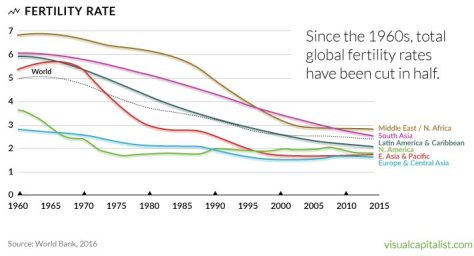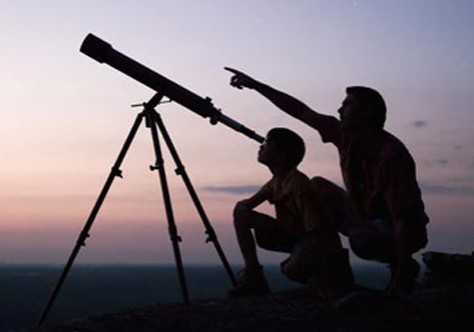
I had lunch with one of my co-workers on the secular left recently. I asked him what his biggest concern with the world. After telling me that he was a “libertarian”, he said that he was alarmed that people were having too many babies. I asked him what he wanted to do about it. He said keep abortion legal, and use the government to stop people from reproducing. Some libertarian!
Anyway, he was just factually wrong about the overpopulation, and I had to launch into a long, detailed explanation of replacement rates, birth rates across the world, and how the prosperity created by capitalism has caused birth rates to decline in even poorer countries. I also explained to him that once a country dips below the replacement fertility rate (2.1 births per woman), it never returns. I concluded my refutation of his assertion by stating that he should be more worried about underpopulation than overpopulation.
Anyway, I had to repeat the same explanation again with another secular leftist that same week. So when I saw this recent Daily Caller article about a new report from the US Centers for Disease Control, I figured I might as well equip you guys to respond to other people with the same wrong view.
It says:
The United States birth rate hit a record low in 2018 with numbers reflecting the lowest birthrates in the past 30 years, reports say.
A new report from the National Center for Health Statistics at the US Centers for Disease Control and Prevention reveals that almost every age group of women under 35 showed birth rate declines in 2018. The provisional number of births in the U.S. in 2018 was 3,788,235, down 2% since 2017. For every 1,000 women, the fertility rate declined 2% from 2017 to 1,728.0 births.
Birth rates had reached a record low in 2017 as well, marking a continuing trend of declining birth rates over the past four years, according to CNN.
[…]These 2018 birth rate numbers are below the necessary threshold needed for population replacement, which is 2,100 births per 1,000 women, CNN reports.
So we’re down to 1.73 births in the USA, which is below the 2.1 rate needed to maintain current population levels.
This new report isn’t an outlier. It confirms what we knew about from previous reports.
Here’s an earlier report from the far-left Pew Research Center, reported by the radically-leftist Slate, of all places.
Excerpt:
A report issued last month by the Pew Research Center found that immigrant births fell from 102 per 1,000 women in 2007 to 87.8 per 1,000 in 2012. That helped bring the overall U.S. birthrate to a mere 64 per 1,000 women—not enough to sustain our current population.
Moreover, the poor, highly fertile countries that once churned out immigrants by the boatload are now experiencing birthrate declines of their own. From 1960 to 2009, Mexico’s fertility rate tumbled from 7.3 live births per woman to 2.4, India’s dropped from six to 2.5, and Brazil’s fell from 6.15 to 1.9. Even in sub-Saharan Africa, where the average birthrate remains a relatively blistering 4.66, fertility is projected to fall below replacement level by the 2070s. This change in developing countries will affect not only the U.S. population, of course, but eventually the world’s.
Now I have a couple tools for you to share to those people who might have irrational views of this issue.
Useful videos
This video explains what’s wrong with overpopulation fears:
And this one explains what the replacement rate number is:
You can share those for people who don’t have time to read. It at least makes the point, even if it doesn’t link to a reputable report.
A useful podcast
This podcast featuring famous economist Dr. Jennifer Roback Morse will be useful for you to understand why the overpopulation myth is something you should be concerned about.
The MP3 file is here. (from 1/22/2010)
Topics:
- how the transition from country to city discourages child-bearing
- how religion impacts how many children parents have
- what is the US birth rate, is it high enough?
- can we just import immigrants to alleviate the low birth rate?
- has increased prosperity encouraged people to have more children?
- how has the purpose of sex changed after the sexual revolution?
- how does the demographic crisis threaten entitlement programs?
- what do we learn from the declining birth rate in Japan?
- how does population growth impact stock market performance?
This podcast explains how some countries aren’t making enough young workers to pay for the social programs needed by a growing number of elderly people wanting to retire.
Please share the post if you found it useful.


